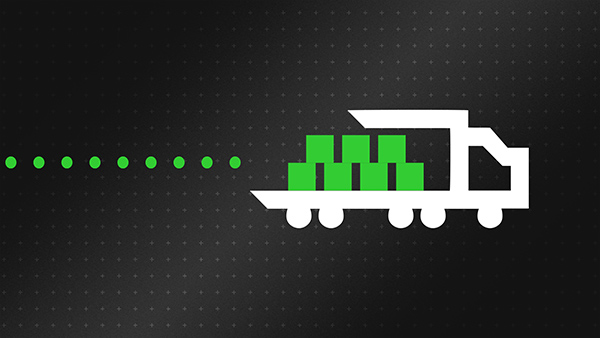Shipping Best Practices
Whether you’re a new shipper or an experienced pro, there’s always room to refine your logistics strategy. When should you convert truckload to LTL? What is intermodal anyway, and how does it fit into your plans? Here you can find resources on choosing the right mode or modes, improving sustainability in your supply chain, and more.
Talk to a Multi-Modal Specialist
Learn about all your options and build a multi-modal gameplan with Coyote today.
Shipping Strategy Resources
Frequently Asked Shipping Questions
When should I choose LTL, partial truckload or full truckload?
Answer
The shipping option that’s right for you depends on either the number of pallets you need to move or the amount of linear feet your freight will take up.
If you’re shipping one to five pallets of freight (or 12 linear feet of trailer space or less), standard LTL is by far your most cost-effective option.
For shipments of six to 12 pallets (between 12 and 28 linear feet), you can ship standard LTL, but partial truckload and volume LTL will also be reasonable alternatives for you. Keep in mind, though, that there is less capacity in the market for these two options.
To ship more than 12 pallets or 28 linear feet of trailer space, you will need to book a full truck.
What is intermodal and when should I use it?
Answer
Intermodal shipping is a full truckload conversion product in which your shipment travels in part over the road and in part by railroad.
To ship intermodal, you’ll need to have a full truckload of freight. For it to really make sense for you, you’ll also need to be shipping it more than 750 miles or so, and you will need to be able to afford a day or two of additional transit time as well.
If all of the above is true for you, intermodal can be a very cost-effective and environmentally friendly alternative to over-the-road shipping.
How can I use different modes to create a more sustainable supply chain?
Answer
There’s no way around it — trucks, though necessary, burn a lot of diesel and emit a lot of carbon.
Anytime you can make transportation more efficient, you will help reduce your own carbon footprint and the overall carbon impact of the shipping industry.
There are a number of ways you can achieve this. You can consolidate multiple LTL shipments into a full truckload. You can use LTL when you have only a few pallets to consolidate your freight with another shipper’s. And can ship intermodal for your long-haul truckload freight to get as much of it off the road as you can.
Learn more about how supply chain professionals are approaching sustainability in this original research study
More Resources for Shippers Like You

Getting Started With Supply Chain Sustainability
Follow this five-step guide to starting a sustainability program within your supply chain. Learn how to measure success toward your sustainability goals.

Guide to LTL Carriers
Find out which of the seven distinct types of LTL carrier is right for your freight. Learn how 3PLs fit into the LTL carrier market and how they can help you.

Webinar: TL vs. LTL vs. Intermodal
Watch an informative webinar from Digital Summit 2020 in which Coyote shipping experts break down the differences between these three modes.
